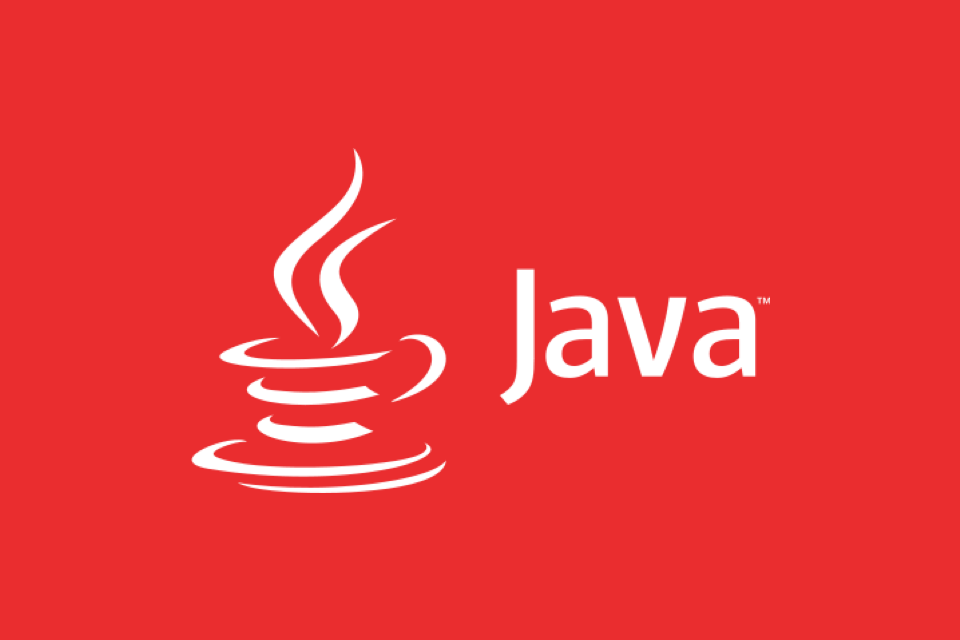Asynchronous Programming Techniques in Modern Java
Jul 07, 2025 am 02:24 AMJava supports asynchronous programming including the use of CompletableFuture, responsive streams (such as Project Reactor), and virtual threads in Java 19. 1. CompletableFuture improves code readability and maintenance through chain calls, and supports task orchestration and exception handling; 2. Project Reactor provides Mono and Flux types to implement responsive programming, with backpressure mechanism and rich operators; 3. Virtual threads reduce concurrency costs, are suitable for I/O-intensive tasks, and are lighter and easier to expand than traditional platform threads. Each approach has applicable scenarios, and appropriate tools should be selected according to your needs and mixed models should be avoided to maintain simplicity.

Java has come a long way in supporting asynchronous programming, especially with the evolution of features like CompletableFuture , reactive streams, and more recently, virtual threads in Java 19 . If you're working on applications that require high concurrency—like web services or real-time data processing—understanding how to manage async tasks efficiently is key.

Using CompletableFuture for Cleaner Async Code
Before CompletableFuture (introduced in Java 8), managing asynchronous operations often means dealing with nested callsbacks or manually handling thread coordination. Now, it's much smoother.

With CompletableFuture , you can chain async operations using methods like .thenApply() , .thenAccept() , and .exceptionally() . This makes your code not only more readable but also easier to debug and maintain.
For example:

CompletableFuture<String> future = CompletableFuture.supplyAsync(() -> {
// Simulate a long-running task
return "Result";
});
future.thenApply(result -> result "processed")
.thenAccept(System.out::println);A few things to keep in mind:
- Avoid blocking calls unless necessary; use
.thenApply()or.thenCompose()to continue the flow. - Handle exceptions gracefully using
.exceptionally()or.handle()so your async pipeline doesn't silently fail. - Use custom executors if you want more control over thread pools instead of relying on the common fork-join pool.
Leveraging Reactive Streams with Project Reactor
If you're building systems that deal with streams of data—like event-driven architectures or streaming APIs—reactive programming becomes a natural fit. Libraries like Project Reactor offer Mono and Flux types that represent asynchronous sequences of 0..1 ( Mono ) or 0..N ( Flux ) items.
Here's a simple example of fetching user data asynchronously:
Mono<User> userMono = userService.getUserById(123);
userMono.subscribe(user -> System.out.println("Got user: " user.getName())); Reactive streams give you backpressure support out of the box, which helps prevent overwhelming your system when producers are faster than consumers. Also, operators like map , flatMap , filter , and zip make composing complex async logic surprisingly clean.
Some tips:
- Don't mix blocking and non-blocking styles without understanding the consequences.
- Be cautious about where transformations happen by specifying schedulers using
.subscribeOn()and.publishOn(). - Use
Schedulers.boundedElastic()for blocking I/O-bound tasks inside a reactive pipeline.
Exploring Virtual Threads (Java 19)
One of the biggest recent additions to Java's async capabilities is virtual threads , introduced as part of Project Loom starting from Java 19.
Unlike platform threads (the traditional OS-backed threads), virtual threads are lightweight and managed by the JVM. This means you can spawn millions of them without the usual overhead.
To try it out:
ExecutorService executor = Executors.newVirtualThreadPerTaskExecutor();
executor.submit(() -> {
// Your long-running or blocking task here
return null;
});This is particularly useful for I/O-heavy workloads like HTTP clients, database calls, or message brokers, where threads often sit idle waiting for responses.
Key points:
- Virtual threads aren't magic—they still need resources, just fewer than platform threads.
- They work best when used with blocking-style code that would otherwise tie up regular threads.
- Existing async libraries will likely evolve to take advantage of this under the hood soon.
Asynchronous programming in modern Java offers several solid paths depending on your use case. Whether you're sticking with CompletableFuture , going full reactive, or experimenting with virtual threads, each approach brings its own strengths to the table. The trick is knowing when to reach for which tool—and avoiding mixing models unless you really need the flexibility.
That's basically it.
The above is the detailed content of Asynchronous Programming Techniques in Modern Java. For more information, please follow other related articles on the PHP Chinese website!

Hot AI Tools

Undress AI Tool
Undress images for free

Undresser.AI Undress
AI-powered app for creating realistic nude photos

AI Clothes Remover
Online AI tool for removing clothes from photos.

Clothoff.io
AI clothes remover

Video Face Swap
Swap faces in any video effortlessly with our completely free AI face swap tool!

Hot Article

Hot Tools

Notepad++7.3.1
Easy-to-use and free code editor

SublimeText3 Chinese version
Chinese version, very easy to use

Zend Studio 13.0.1
Powerful PHP integrated development environment

Dreamweaver CS6
Visual web development tools

SublimeText3 Mac version
God-level code editing software (SublimeText3)

Hot Topics
 A Developer's Guide to Maven for Java Project Management
Jul 30, 2025 am 02:41 AM
A Developer's Guide to Maven for Java Project Management
Jul 30, 2025 am 02:41 AM
Maven is a standard tool for Java project management and construction. The answer lies in the fact that it uses pom.xml to standardize project structure, dependency management, construction lifecycle automation and plug-in extensions; 1. Use pom.xml to define groupId, artifactId, version and dependencies; 2. Master core commands such as mvnclean, compile, test, package, install and deploy; 3. Use dependencyManagement and exclusions to manage dependency versions and conflicts; 4. Organize large applications through multi-module project structure and are managed uniformly by the parent POM; 5.
 Building RESTful APIs in Java with Jakarta EE
Jul 30, 2025 am 03:05 AM
Building RESTful APIs in Java with Jakarta EE
Jul 30, 2025 am 03:05 AM
SetupaMaven/GradleprojectwithJAX-RSdependencieslikeJersey;2.CreateaRESTresourceusingannotationssuchas@Pathand@GET;3.ConfiguretheapplicationviaApplicationsubclassorweb.xml;4.AddJacksonforJSONbindingbyincludingjersey-media-json-jackson;5.DeploytoaJakar
 Developing a Blockchain Application in Java
Jul 30, 2025 am 12:43 AM
Developing a Blockchain Application in Java
Jul 30, 2025 am 12:43 AM
Understand the core components of blockchain, including blocks, hashs, chain structures, consensus mechanisms and immutability; 2. Create a Block class that contains data, timestamps, previous hash and Nonce, and implement SHA-256 hash calculation and proof of work mining; 3. Build a Blockchain class to manage block lists, initialize the Genesis block, add new blocks and verify the integrity of the chain; 4. Write the main test blockchain, add transaction data blocks in turn and output chain status; 5. Optional enhancement functions include transaction support, P2P network, digital signature, RESTAPI and data persistence; 6. You can use Java blockchain libraries such as HyperledgerFabric, Web3J or Corda for production-level opening
 python property decorator example
Jul 30, 2025 am 02:17 AM
python property decorator example
Jul 30, 2025 am 02:17 AM
@property decorator is used to convert methods into properties to implement the reading, setting and deletion control of properties. 1. Basic usage: define read-only attributes through @property, such as area calculated based on radius and accessed directly; 2. Advanced usage: use @name.setter and @name.deleter to implement attribute assignment verification and deletion operations; 3. Practical application: perform data verification in setters, such as BankAccount to ensure that the balance is not negative; 4. Naming specification: internal variables are prefixed, property method names are consistent with attributes, and unified access control is used to improve code security and maintainability.
 css dark mode toggle example
Jul 30, 2025 am 05:28 AM
css dark mode toggle example
Jul 30, 2025 am 05:28 AM
First, use JavaScript to obtain the user system preferences and locally stored theme settings, and initialize the page theme; 1. The HTML structure contains a button to trigger topic switching; 2. CSS uses: root to define bright theme variables, .dark-mode class defines dark theme variables, and applies these variables through var(); 3. JavaScript detects prefers-color-scheme and reads localStorage to determine the initial theme; 4. Switch the dark-mode class on the html element when clicking the button, and saves the current state to localStorage; 5. All color changes are accompanied by 0.3 seconds transition animation to enhance the user
 css dropdown menu example
Jul 30, 2025 am 05:36 AM
css dropdown menu example
Jul 30, 2025 am 05:36 AM
Yes, a common CSS drop-down menu can be implemented through pure HTML and CSS without JavaScript. 1. Use nested ul and li to build a menu structure; 2. Use the:hover pseudo-class to control the display and hiding of pull-down content; 3. Set position:relative for parent li, and the submenu is positioned using position:absolute; 4. The submenu defaults to display:none, which becomes display:block when hovered; 5. Multi-level pull-down can be achieved through nesting, combined with transition, and add fade-in animations, and adapted to mobile terminals with media queries. The entire solution is simple and does not require JavaScript support, which is suitable for large
 How to use Java MessageDigest for hashing (MD5, SHA-256)?
Jul 30, 2025 am 02:58 AM
How to use Java MessageDigest for hashing (MD5, SHA-256)?
Jul 30, 2025 am 02:58 AM
To generate hash values using Java, it can be implemented through the MessageDigest class. 1. Get an instance of the specified algorithm, such as MD5 or SHA-256; 2. Call the .update() method to pass in the data to be encrypted; 3. Call the .digest() method to obtain a hash byte array; 4. Convert the byte array into a hexadecimal string for reading; for inputs such as large files, read in chunks and call .update() multiple times; it is recommended to use SHA-256 instead of MD5 or SHA-1 to ensure security.
 python parse date string example
Jul 30, 2025 am 03:32 AM
python parse date string example
Jul 30, 2025 am 03:32 AM
Use datetime.strptime() to convert date strings into datetime object. 1. Basic usage: parse "2023-10-05" as datetime object through "%Y-%m-%d"; 2. Supports multiple formats such as "%m/%d/%Y" to parse American dates, "%d/%m/%Y" to parse British dates, "%b%d,%Y%I:%M%p" to parse time with AM/PM; 3. Use dateutil.parser.parse() to automatically infer unknown formats; 4. Use .d






